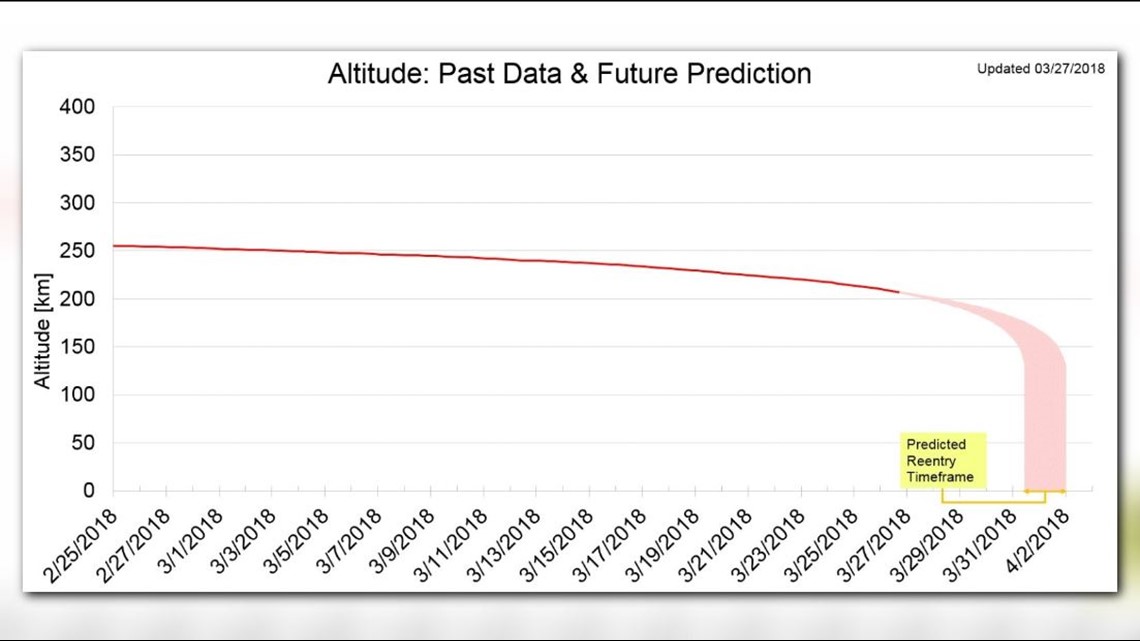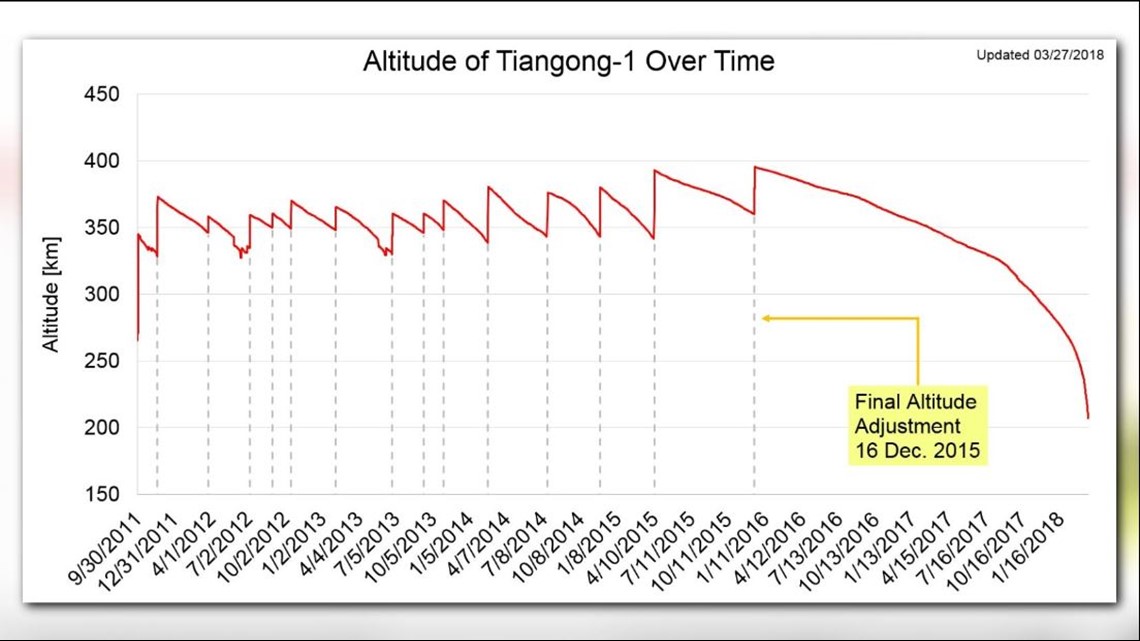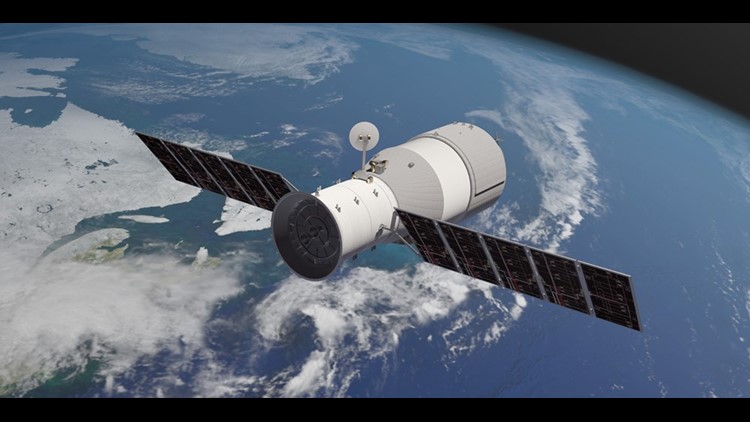A Chinese space station that's roughly the size of a large school bus is expected to re-enter the earth's atmosphere this weekend.
In 2011, the Tiangong-1 was the first space station built and launched by China. The Heavenly Palace weighs 9.4 tons and is 34-feet long. It is equipped with two sleep stations for astronauts, but no one has been on board since June 2013.
In March 2016, the agency lost contact and total telemetry with the station. The last orbital adjustment they could make was back in December 2015.
Since then, the space station has been slowly losing orbit. The orbital decay, as we call it, has been accelerating over the past few weeks, and now it is forecast to re-enter the earth's atmosphere sometime Sunday plus or minus 36 hours.
No one will really know when the station will hit until about an hour before it happens, Sean O’Keefe, a former NASA Administrator and university professor at Syracuse University, told USA TODAY.




Where will it re-enter?
We know it will be somewhere between 43° North and 43° South latitudes. The Northern Hemisphere prediction includes multiple states in the U.S. from northern California to Pennsylvania.
Other than that, it’s a tough call until we start seeing it enter the atmosphere and tracking it on radar. The good news is that most of the area is water or uninhabited land areas. Still, though, there is a very small chance it could be close to where people live and more than likely people will be able to see it.
After the station enters the atmosphere, any debris that remains will fall to the ground in less than 20 minutes, likely flaming, O’Keefe said. Hopefully, the fireballs will hit water instead of land.
The odds of anything hitting a person is unlikely, considering in years of space exploration only one person, Lottie Williams of Tulsa, has ever been struck by spacecraft debris. A piece of the Delta II rocket hit her on the shoulder in 1996. She wasn't seriously injured.
What is concerning is that a highly toxic substance called hydrazine could survive re-entry. Aerospace warns: Don’t touch unknown substances on the ground and avoid inhaling fumes.
Anyone who discovers what might be space debris should contact local authorities, who can help transfer the part safely back to China.



